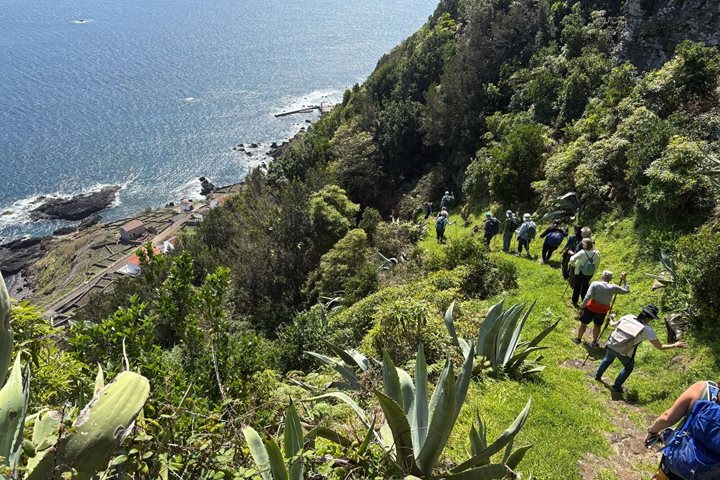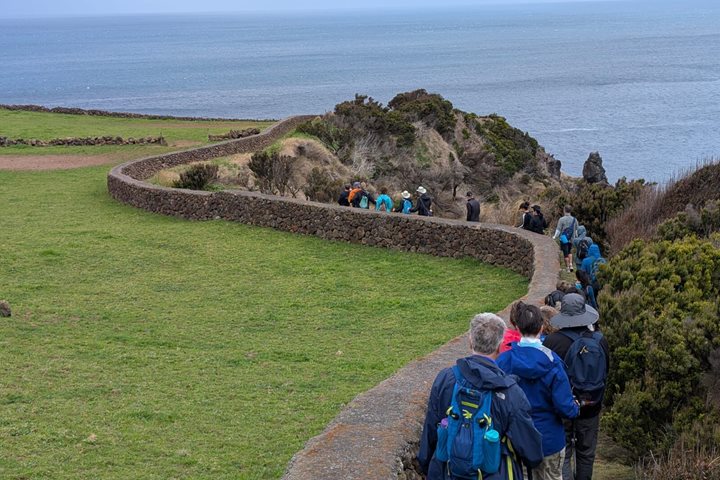Today we arrived to the beautiful Cape Verde Archipelago; early in the morning National Geographic Explorer docked at the ferry terminal in Porto Novo, located in the island of Santo Antão. Santo Antão is the northern and westernmost of the nine main islands of the remote archipelago, approximately 500 km off the western coast of Senegal. It is also the second largest of the group, and a place of extreme contrasts.
Shortly after breakfast we boarded a number of vans and headed to the opposite coast, passing through upper portion of the island. The southern portion of the island, including the area around Porto Novo, is extremely barren, with just a few short grasses and scattered acacia trees on the low hills. But as we gained altitude, the scene slowly changed completely. As the terrain became more and more rugged, it also transformed into a green landscape. By the time we reached the volcanic crater of Cova de Paul, at 3,859 ft above sea level, we were surrounded by conifers and other trees. We enjoyed the amazing view and had the chance to see the neglected kestrel, and endemic subspecies of the European kestrel only found in the archipelago.
We continued our journey and constantly marveled at the incredibly high number of stone terraces used to raise crops built everywhere and oftentimes on amazingly steep hillsides. Most of those terraces, which are a used to slow down the flow of water and avoid erosion, as well as the cobbled road, were made by slave labor during the late 1500s and the 1600s. It is really impressive the amount of work and skill needed in such endeavors! The views of the rough pinnacles and cliffs, picturesque stone houses and terraces made for an enjoyable excursion.
We eventually arrived to the northern coast where we visited the town of Ribeira Grande, Ponta do Sol and Fontainhas. After an abundant lunch at a local restaurant, where we enjoyed some traditional dishes and live music, we continued traveling along the northern coast, stopping for a visit at a local distillery. We all happily tried some pastries and several varieties of liquors, including some made of passion-flower, honey or sugar cane and the extremely strong grogue.
A short distance away we visited the inscribed rock in Ribeira do Penedo; intriguing inscriptions and a crucifix are clearly seen and the identity of its creators remain a mystery, with theories pointing to early Portuguese, Phoenician and even Chinese. Eventually we came back to our floating home at Porto Novo for some welcomed rest, showers and dinner to regain our strength and prepare ourselves for a marvelous concert on board by Maria de Barros, one of the most popular and recognized singers from Cape Verde. We all enjoyed her music and many polished the lounge’s floor dancing at her funaná rhythms, making for the perfect ending to an amazing fist day at the Cape Verde islands.







